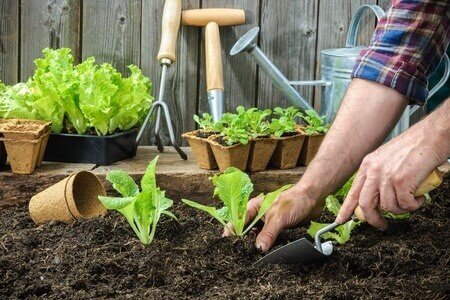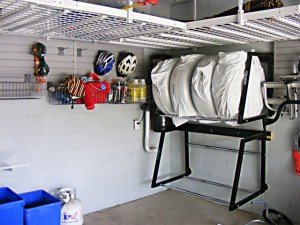 Now that the temperatures are steadily rising, your thoughts have likely turned to gardening. The Farmer’s Almanac predicts our last date of spring frost for Toronto as May 9th, but how can you be sure your soil is ready to be worked? Take a handful of soil and squeeze. If the soil forms a ball, it’s not quite ready. When the soil crumbles in your hand, it’s go time for gardening. Though you’re probably eager to start planting, to get the best results you must first prep the soil.
Now that the temperatures are steadily rising, your thoughts have likely turned to gardening. The Farmer’s Almanac predicts our last date of spring frost for Toronto as May 9th, but how can you be sure your soil is ready to be worked? Take a handful of soil and squeeze. If the soil forms a ball, it’s not quite ready. When the soil crumbles in your hand, it’s go time for gardening. Though you’re probably eager to start planting, to get the best results you must first prep the soil.
Feed and Prep Soil to Maximize Results
Building a rock-solid home begins with laying a solid foundation. Likewise, growing healthy, vibrant plants begins with healthy soil. Dry, sandy or compacted soil isn’t conducive to producing healthy plants. Amend problematic soil by introducing nutrient-rich, organic matter into it at the start of each growing season.
Spread a one to three-inch layer of dark, earthy, finished compost on flower beds and gardens. When used in a vegetable garden, use organic compost or a variety designated for use with edible plants. Work compost into the top six to twelve inches of soil using a shovel, rake or rototiller one to two weeks before planting. Compost adds nutrients to soil and encourages the presence of garden-friendly earth worms.
Compost improves the hardest, toughest soil, creating a nutrient-rich environment where flowers and vegetation can thrive. Strong, healthy plants, grown in a nutrient-rich soil, tend to be more naturally resistant to bugs and diseases.
Deciding What to Plant and Where
You’ve selected the perfect space to plant your garden. Only, it might not be so perfect. For instance, most flowering annuals won’t fare well in the shade. Other plants don’t do well with extended hours of sunlight. Carefully select plants that are optimal for your allocated space.
If the area receives less than six hours of daylight each day, plant vegetation that thrives in shade. Begonias, impatiens, elephant ears, black-eyed Susans and fuchsia do well in shade. If the area gets partial shade, pansies, petunias and snapdragons may be a good choice.Flower beds that receive more than six hours of sunlight daily are ideal for flowering annuals like colourful petunias, geraniums, marigolds, carnations, sunshine impatiens or verbena.
Your annuals will make the most impact if planted in groups of three or more. Each group of flowers should overlap the next to create a powerful punch of colour.
Sunlight should also dictate the makeup and layout of your vegetable garden. Kale, herbs, spinach and scallions can do well with as little as three hours of sunlight each day. Peas, beans and root vegetable require close to five hours of daily sunlight.
While tending to your flowers and garden, don’t forget the perennials. If they aren’t looking as lively and vivacious as they once did, it may be because they’ve overgrown the available space. Divide the plants, relocating some of them. The additional room will allow the plants left to flourish. The rest can be used in another part of your yard. If you don’t have room to plant them elsewhere, consider gifting them.
Once planting is done, give plants a weekly boost by feeding them with a calcium-rich eggshell tea. To create the eggshell tea, store eggshells in a container of water. Allow them to steep for a few days or weeks and continue adding more shells. Water plants with one cup of the eggshell mixture combined with a gallon of water. This calcium-rich mixture will strengthen plants and improve production.
Create a Gardening Space in the Garage
There is no shortage of tools and supplies required to keep your lawn and garden looking their best. Shovels, rakes, hoes, trimmers, hedgers, garden gloves, compost, grass seed and fertilizer can take over your garage during gardening season. Searching for tools amid chaos is frustrating.
 When a task becomes frustrating, it’s human nature to avoid it. So make time at the start of the season to take inventory of your gardening tools and supplies and organize them. If there isn’t enough room in the garage for all of your garden tools, consider installing a wall organization or shelving system to create dedicated storage space for each item. A purchased or custom-built garden bench will provide space for repotting plants. However, a repurposed table will achieve the same end.
When a task becomes frustrating, it’s human nature to avoid it. So make time at the start of the season to take inventory of your gardening tools and supplies and organize them. If there isn’t enough room in the garage for all of your garden tools, consider installing a wall organization or shelving system to create dedicated storage space for each item. A purchased or custom-built garden bench will provide space for repotting plants. However, a repurposed table will achieve the same end.
Once your garden tools are neat and organized, the soil has been fed and you’ve chosen the right plants for your yard, you’re on the way to making this year’s garden your best yet.
